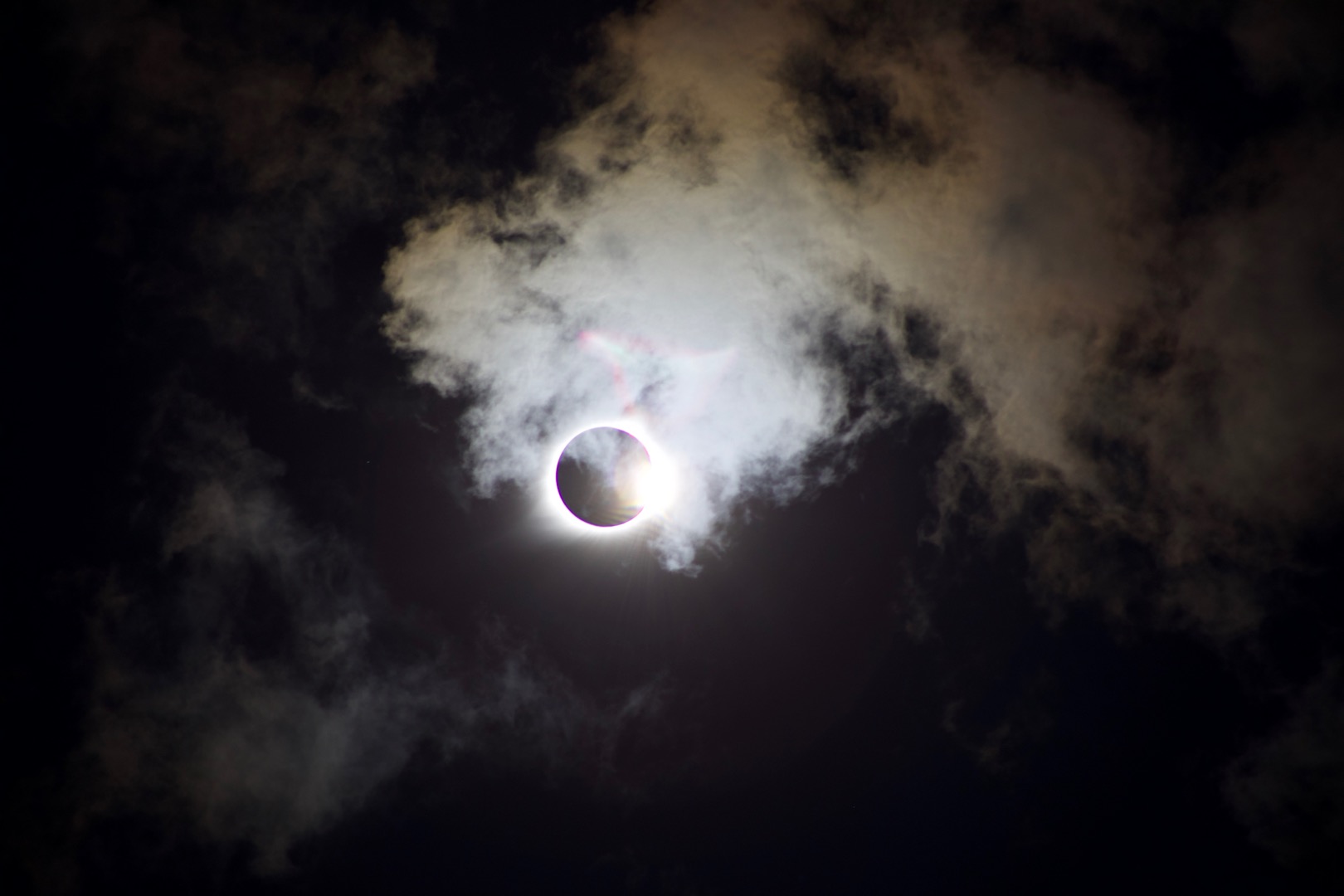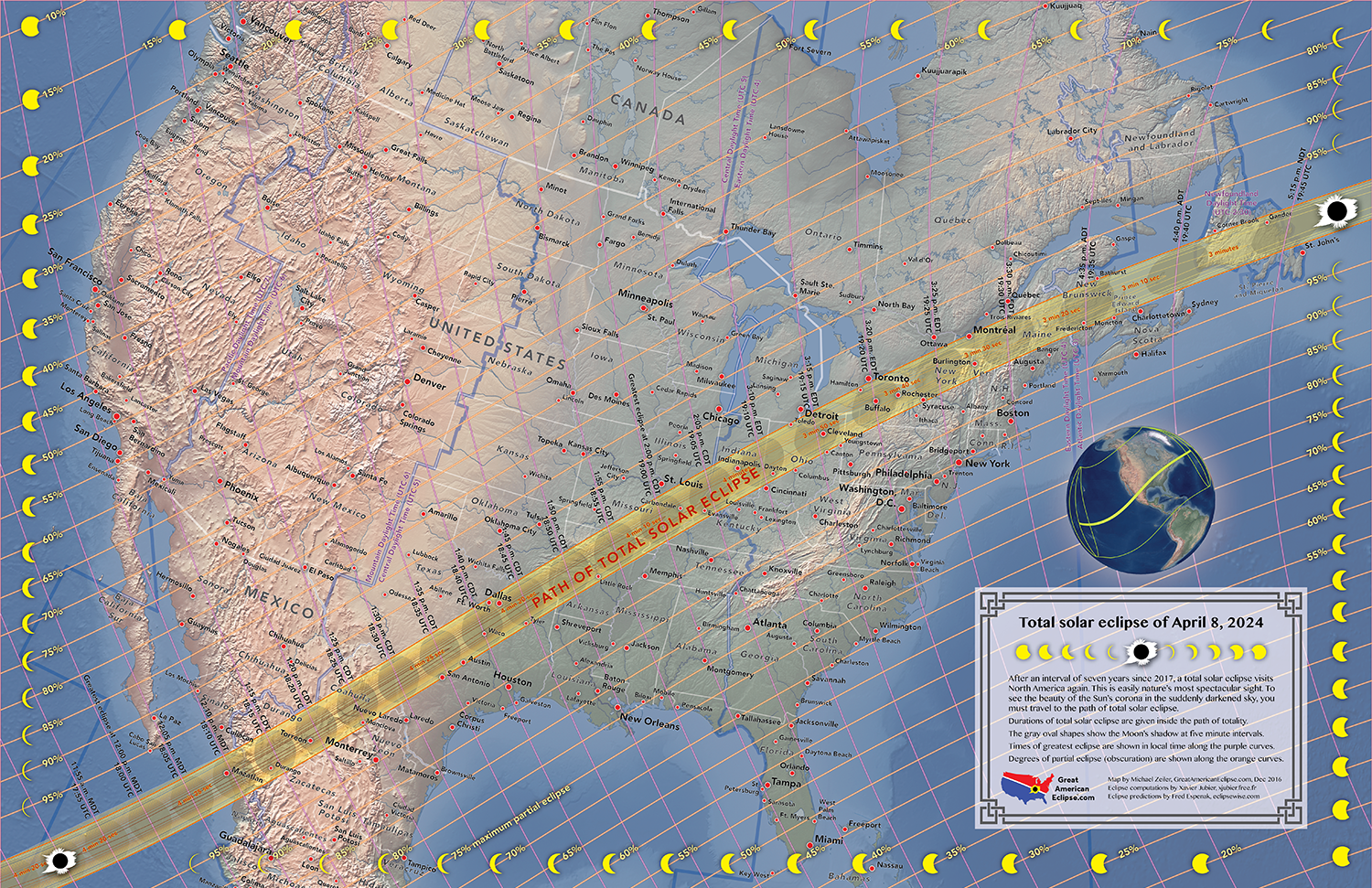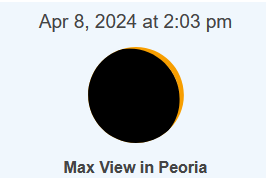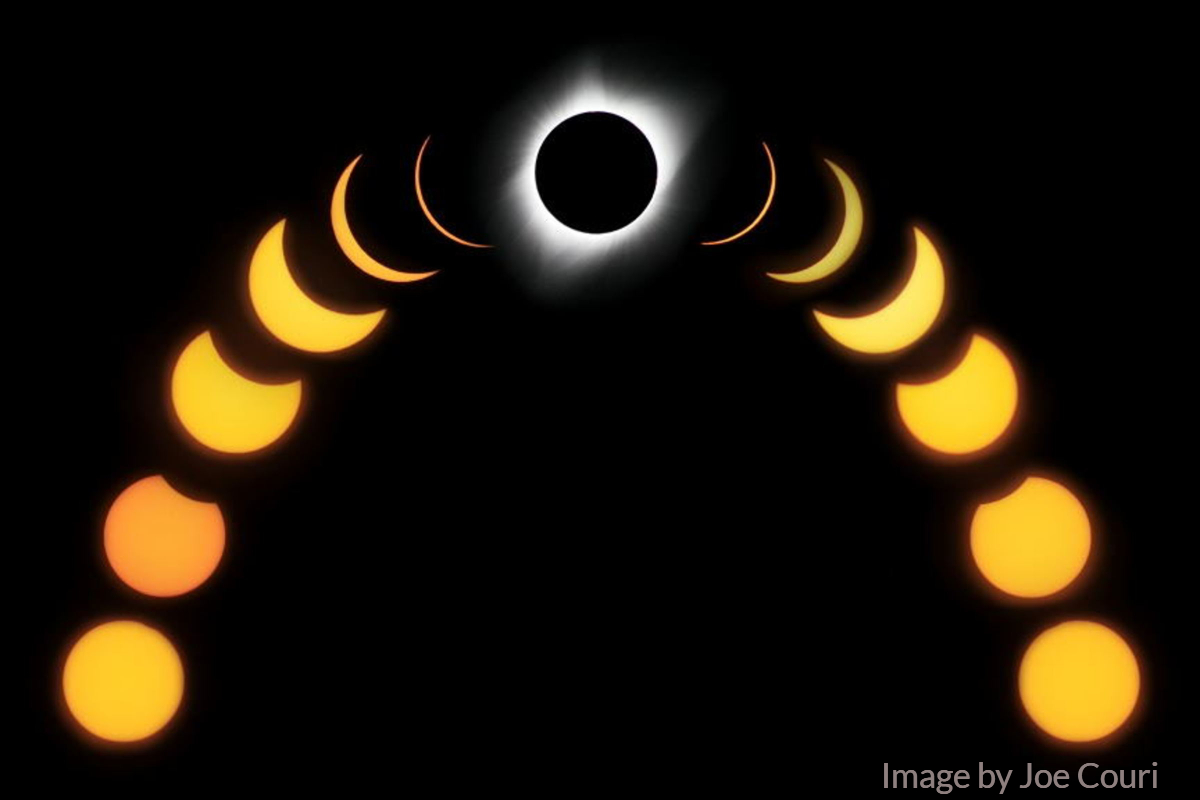
On April 8, 2024, there will be a total solar eclipse visible along a narrow path across the contiguous United States. For about 3 minutes, the Moon will entirely block the light of the Sun. Dusk will fall in the middle of the afternoon. Stars and planets will be visible. The next total solar eclipse that crosses the United States will not be until 2045. Make eclipse-watching plans now! Learn more in this video.
If you want to see this amazing event, you need to travel to the narrow path that crosses the United States. On April 8 the Sun will be about 94% eclipsed locally. In order to get the most wonderful, surreal, and sublime experience, you need to travel to the eclipse path! The 2024 eclipse path crosses through southern Illinois, with the closest point being in Indiana, a 3-to-4-hour drive from Peoria. It is a good idea to make plans as soon as possible, because accommodations fill up and get more expensive the closer we get to the eclipse dates.

Click here for a map of the path of the total solar eclipse of 2024.
How to safely observe the Sun:
In order to watch the eclipse, you will need to wear proper eye protection. Eclipse glasses are a popular choice, and are very inexpensive. They are available for purchase in the Peoria Riverfront Museum store for $4. For those in the path of totality in 2024, for the 2.5 minutes that the Sun is totally covered by the Moon, you can safely observe the solar atmosphere without eye protection.
What you will see:
If you do not have the option to travel to totality, you can see a partial eclipse through a solar filter. In the Peoria area, it will look something like this when it is maximally eclipsed in 2024.

It is worth watching a partial eclipse if you cannot travel to totality - it will still be an unusual and noteworthy sight. However, if you do have a chance to go to totality, you should. A partial eclipse is exciting, but a total solar eclipse is a rare phenomenon, one of the most awe-inspiring in nature. If you travel to totality, you will see something like the image below. As the Moon passes in front of the Sun, it will be as if dusk has fallen in midday. Stars will appear and it will be quite dark for about 3 minutes.

Observing a solar eclipse can spark great curiosity about astronomy, physics, and the natural world. Here are some resources for teaching about eclipses and the Sun and Moon.
NSTA Solar Eclipse Guide for Educators
Many eclipse related activities for educators
NSTA Preparing for the Eclipse and Science Standards (Young Children)
NSTA Preparing for the Eclipse and Science Standards (Middle School)
NSTA Preparing for the Eclipse and Science Standards (High School)
Toilet Paper Solar System (distance and scale of planets)
